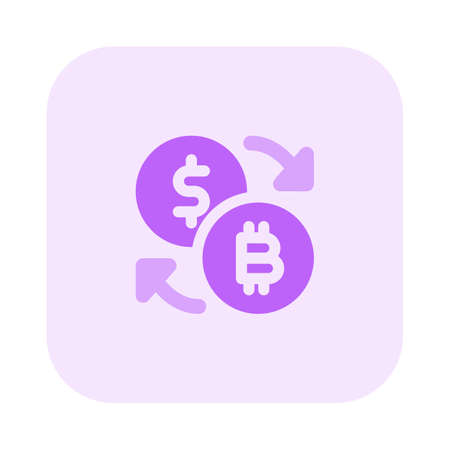Introduction to Blockchain Layers
If you’re new to blockchain or just looking to deepen your understanding, you’ve probably heard the terms “Layer 1” and “Layer 2” tossed around in crypto circles. These concepts are foundational in blockchain development, especially as the technology grows in popularity across the United States. But what do these layers really mean, and why do they matter? Think of blockchain like a busy highway system—Layer 1 is the main road everyone drives on, while Layer 2 introduces extra lanes or shortcuts to help traffic move faster and more efficiently. As we explore the world of cryptocurrencies and decentralized applications, understanding these layers will help you grasp how blockchain networks handle speed, scalability, and security challenges. In this article, we’ll break down what Layer 1 and Layer 2 solutions are, why they’re essential for the American crypto landscape, and how they pave the way for future growth. Let’s start with the basics so you can feel confident navigating this exciting space!
2. What Are Layer 1 Solutions?
Layer 1 solutions refer to the foundational blockchain networks that form the base layer of decentralized ecosystems. Well-known examples include Bitcoin and Ethereum, which are widely recognized in the United States for their security, transparency, and robust community support. These blockchains operate independently, handling all transaction processing and consensus mechanisms directly on their own network.
For American developers and users, Layer 1 blockchains offer a direct entry point into blockchain technology. They set the rules for how data is recorded, how transactions are validated, and how new coins or tokens are created. Let’s take a closer look at some key features that make Layer 1s vital:
| Feature | Bitcoin | Ethereum |
|---|---|---|
| Consensus Mechanism | Proof of Work (PoW) | Currently PoW, moving to Proof of Stake (PoS) |
| Main Use Case | Digital Gold / Payments | Smart Contracts / DApps |
| Security Level | Very High | High |
| Transaction Speed | ~7 TPS* | ~15-30 TPS* |
| Developer Ecosystem | Mature but focused on payments | Very Active, diverse applications |
*TPS = Transactions Per Second; actual throughput may vary.
The significance of these Layer 1 networks goes beyond just technology—they help establish trust in digital assets and decentralized applications (DApps), which is particularly important in the U.S., where regulatory clarity and security are top concerns for both consumers and businesses.
For developers, building directly on Layer 1 means interacting with the most secure parts of the blockchain stack but often comes with scalability limitations like slower transaction speeds and higher fees during peak times. That’s why understanding Layer 1 fundamentals is crucial before exploring advanced solutions like Layer 2. Whether you’re looking to invest, build apps, or simply understand how crypto fits into the American financial landscape, knowing what Layer 1 offers sets a solid foundation.
![]()
3. What Are Layer 2 Solutions?
Layer 2 solutions are innovative enhancements built on top of existing Layer 1 blockchains, designed to tackle some of the most pressing challenges in blockchain development—namely, scalability and transaction speed. In the U.S., where blockchain adoption is surging across industries from finance to gaming, these solutions are crucial for creating a seamless and user-friendly experience.
The Need for Scalability
As more Americans interact with decentralized applications (dApps), the demand for higher transaction throughput grows. Layer 1 networks like Bitcoin and Ethereum can become congested, leading to slow confirmation times and higher fees. Layer 2 solutions step in here, providing frameworks that process transactions off the main chain while still benefiting from its security.
Lightning Network: Fast Payments for Bitcoin
One standout example is the Lightning Network, which sits atop the Bitcoin blockchain. By enabling instant microtransactions off-chain and only settling on-chain when necessary, the Lightning Network dramatically reduces wait times and costs—making it a game-changer for U.S. merchants and consumers who expect speedy digital payments.
Optimistic Rollups: Scaling Ethereum Efficiently
On the Ethereum side, Optimistic Rollups bundle hundreds of transactions together and process them outside of the main chain, then submit a single summary back to Ethereum. This approach maintains the security guarantees of Layer 1 while boosting throughput and lowering gas fees—a key improvement for American developers building scalable dApps or NFT marketplaces.
Enhancing User Experience
Ultimately, Layer 2 solutions bridge the gap between blockchain’s promise and real-world usability. For U.S.-based users and businesses, this means smoother onboarding experiences, lower transaction costs, and faster interactions—helping blockchain technology fit seamlessly into everyday life and commercial activities.
4. Comparing Layer 1 and Layer 2: Benefits and Trade-offs
If you’re new to blockchain development or considering investing, understanding the real-world pros and cons of Layer 1 and Layer 2 solutions can feel a bit like choosing between highways and local roads for your daily commute. Let’s break down these “routes” in a way that makes sense for both developers building the tech and investors putting their money on the line.
Layer 1: The Main Highway
Think of Layer 1 as the main highway system—like Interstate 95 running up the East Coast. It’s sturdy, direct, and everyone uses it. In blockchain terms, Layer 1 includes foundational networks like Bitcoin and Ethereum. These blockchains are responsible for validating transactions, securing the network, and ensuring decentralization.
Benefits
- Security: Like major highways patrolled by state police, Layer 1 networks have robust security protocols.
- Decentralization: No single authority controls the road—users collectively maintain it.
- Simplicity: Building directly on Layer 1 often means fewer moving parts.
Trade-offs
- Scalability Issues: Rush hour traffic is real—these networks can get congested and slow.
- Higher Fees: Just like tolls on busy highways, costs rise when there’s more demand.
Layer 2: The Local Express Lanes
Layer 2 solutions are like express lanes or side roads built to ease congestion. They run “on top of” existing highways (Layer 1), helping traffic move faster without replacing the original infrastructure. Examples include Lightning Network (for Bitcoin) and Arbitrum or Optimism (for Ethereum).
Benefits
- Scalability: Less congestion means faster speeds and lower transaction costs—think HOV lanes during rush hour.
- User Experience: Smoother rides with fewer stops, making applications more practical for everyday use.
Trade-offs
- Complexity: More moving pieces can mean more things to manage—like needing an E-ZPass for certain routes.
- Security Inheritance: While generally safe, some solutions rely on how well they connect back to the main highway (Layer 1) for full security benefits.
A Side-by-Side Comparison
| Layer 1 (Main Highway) | Layer 2 (Express Lanes) | |
|---|---|---|
| Security | Very high; directly secured by network validators/miners | Good, but depends on connection to Layer 1 |
| Speed & Cost | Slower & higher fees during peak times | Faster & lower fees due to offloading transactions |
| User Experience | Simpler but can be slow when busy | Smoother, especially for frequent transactions |
| Complexity (Dev Perspective) | Straightforward integration; less tooling needed | Adds complexity; requires handling communication between layers |
| Main Use Case | “Store of value” or high-security applications (e.g., big payments) | “Everyday payments” or high-volume activity (e.g., gaming, microtransactions) |
The Takeaway for Developers and Investors
If you want the rock-solid reliability of a major interstate, Layer 1 is your go-to. But if you’re aiming for speed and efficiency with a willingness to handle extra complexity, Layer 2 opens up exciting possibilities. Savvy investors should look at projects that make smart use of both layers—like picking the right route depending on traffic conditions—to maximize growth potential while managing risk.
5. Real-World Examples and Use Cases
To truly understand the impact of Layer 1 and Layer 2 solutions in blockchain development, it’s helpful to look at real-world projects and companies right here in the U.S. that are leveraging these technologies. These examples not only highlight the practical applications of blockchain but also showcase how these layers are shaping innovative financial products and digital experiences.
Leading Layer 1 Projects: Ethereum and Solana
Ethereum remains the most recognized Layer 1 blockchain in America, powering a vast ecosystem of decentralized finance (DeFi) platforms like Uniswap and Aave. These protocols allow users to trade, lend, or borrow crypto assets without traditional banks, all secured by Ethereum’s robust network. Meanwhile, Solana, another Layer 1 solution gaining traction, is known for its high throughput and low transaction fees, attracting NFT marketplaces such as Magic Eden.
Scaling with Layer 2: Polygon and Arbitrum
As demand for DeFi and NFTs grows, scalability becomes crucial. Enter Layer 2 solutions like Polygon and Arbitrum. These networks work on top of Ethereum to process transactions more efficiently. For example, OpenSea, a leading NFT marketplace, now supports trading on Polygon, significantly reducing gas fees for creators and collectors. Similarly, popular DeFi platforms such as SushiSwap have integrated with Arbitrum to offer faster, more affordable trades.
DeFi: Revolutionizing Finance
The American DeFi sector is booming thanks to these technological advancements. Startups like Compound Labs, based in San Francisco, use Ethereum as their base layer while exploring Layer 2 options to scale their lending protocols. This enables everyday Americans to earn interest or access loans using their crypto holdings—no credit check required.
NFTs: Powering Digital Ownership
NFTs have gone mainstream through high-profile drops by artists and celebrities on platforms built atop both Layer 1 (Ethereum) and Layer 2 (Polygon). Companies like Dapper Labs, creator of NBA Top Shot, leverage Flow (another scalable Layer 1) to deliver collectible moments to basketball fans nationwide, proving blockchain’s value beyond finance.
The Takeaway for Developers and Innovators
If you’re building or investing in the blockchain space in the U.S., understanding where and how companies deploy Layer 1 versus Layer 2 solutions can help you identify opportunities. Whether you’re developing new financial tools or creating digital collectibles, these real-world examples demonstrate that practical adoption is already happening—and it’s only just begun.
6. Choosing the Right Solution for Your Blockchain Project
When it comes to blockchain development in the U.S., selecting between Layer 1 and Layer 2 solutions can have a big impact on your projects success. Each layer serves different needs, so its important to match the right technology to your business goals. Here are some practical tips to help you make an informed choice:
Understand Your Use Case
Ask yourself: Does your project need maximum security and decentralization from day one? If so, building directly on a Layer 1 blockchain like Ethereum or Solana may be best. For projects that prioritize scalability and low transaction fees—like gaming apps or payment platforms—a Layer 2 solution could be more cost-effective.
Consider User Experience
American users expect fast, seamless interactions. If transaction speed and affordability are critical, Layer 2 solutions (such as Optimistic Rollups or zk-Rollups) can deliver quicker confirmations and lower costs, making your app more competitive in the U.S. market.
Factor in Security and Compliance
Layer 1 blockchains tend to offer stronger security due to their larger decentralized networks. This is important for applications handling high-value assets or sensitive data. Also, keep regulatory requirements in mind—certain industries in the U.S. may require stricter compliance, which might be easier to implement at Layer 1.
Plan for Growth
If you anticipate rapid user growth, start with a scalable Layer 2 solution that can handle increased demand without sacrificing performance. However, remember that most Layer 2s still rely on the underlying security of their Layer 1 base.
Tip: Test Before You Commit
Its smart to build prototypes on both layers if possible. Many American blockchain developers use testnets to evaluate performance, costs, and user feedback before launching fully.
Final Thoughts
The right choice depends on your specific project requirements and business vision. By weighing your priorities—security, speed, cost, and compliance—youll be better equipped to choose the best path forward for your blockchain venture in the U.S. Remember: theres no one-size-fits-all answer, but with these tips, youll be ready to make a confident decision.


